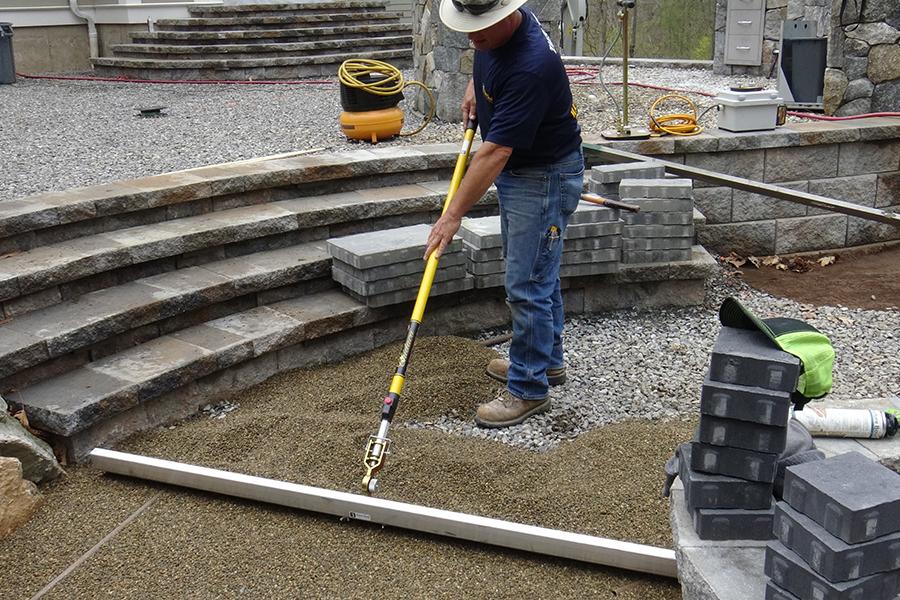What are Aluminum Concrete Screeding Boards and How to Use them?
Everything must be smooth and level when pouring concrete or placing stone for patios or walks. Screeding is one of the last steps in the concrete process. It is done near the end of a paver, brick, or stonework job.
An activity of smoothing out a flexible substance into a flat, smooth, and level layer is screeding. Some tools explicitly made for screeding are available in the market, but you can also accomplish the task with any straight board.
Screeding
The technique of smoothing damp concrete is the process of screening. It is the most critical step in establishing a home or a building foundation. Screeding has two meanings. The first is the flattening of mortar, gravel, or sand during paving. The second is a tool that levels mortar, concrete, or cement when you pour it into a subfloor.
For instance, you may see a damaged and uneven floor in your home that needs filling. You will flatten the surface using a screed after pouring a compound like mortar, gravel, or sand. Screed is a thin top layer of sand or cement laid on concrete flooring. It creates a smooth surface to install finishing materials like tile, flooring, and carpets.
The popularity of Aluminum Screed
Because of its precision, the best aluminum concrete screed board is the most efficient instrument that you can use for screening. Screed boards come in various sizes. The correct use of the tool is to pull it across the damp concrete, regardless of the kind or length of the Screed, to guarantee smoothness and eliminate any unevenness.
The end of an aluminum screed lays evenly on both sides of the moist concrete due to its length. A screed worker must begin at one area and then work his way forward, scraping and smoothing the surface with the screen. The Screed’s constant movement evens out the texture and forces more wet concrete forward to fill any gaps in the floor or wall.
If the sub-floor or slab is enormous, two workers can work together to increase productivity and guarantee the floor is level. Because it has a straight edge, the aluminum screed is famous. The sub-floor size usually determines the type of aluminum screed to use. The golden guideline is that the floor should not change more than 5 mm across a 3-meter surface area.
Screed Types
Gravel, cement, and water are present in both concrete and Screed. Both, however, have distinct characteristics. Concrete employs hard and coarse particles to increase sturdiness, whereas Screed uses smaller aggregates for a smoother texture.
The minimum and maximum screed thicknesses required to finish the operation depend upon the application process. If the application is heavy-duty or industrial, a thicker screed will benefit. Depending on the kind and function, the contractor might prepare the Screed on the building site or use vehicles that mix screed quickly.
For sidewalks and other surfaces, metallic screens are excellent. Moreover, you can also use wood floats for sidewalks. Similarly, bull floats are excellent for garage floors and roads. Aluminum screeds are ideal for screeding patios, floors, slabs, and driveways since they are highly ergonomic. A screed has a long handle, making it simple to hold and utilize.
Moreover, its edge is square, which is crucial for screening, and the rear edge is round, which allows the wet concrete to become smooth. Tile, linoleum, vinyl flooring, wooden blocks, and ceramic tiles are the most popular floors on which you can install the screeds. An aluminum screed is essential for leveling a floor and smoothing a wall before applying new paint.
Benefits of Using Screed Board
Liquid cement screed produces a smooth, level surface suitable for various floor coverings, such as carpet or tiles. Unlike typical screed installation, it does not necessitate the usage of workers on their hands and knees using leveling boards since it is self-leveling.
Following are a few benefits of using a Screed board.
- Screed has a rigid surface that provides it strength to level the floors smoothly.
- Using the concrete board is not difficult, and it doesn’t require hiring a highly skilled professional.
- Screed helps the floors get sufficient height and flooring.
- After completing the flooring process, you will get a smooth surface to apply tiles.
- Using a screed board will increase the lifespan of your floors.
How to Use a Screed Board
It may appear that operating a power screed is simple because all you must do is use the machine. However, even a minor methodological mistake might drastically alter the texture. Here are some pointers on how to get the most of your concrete power screed.
When you distribute the concrete from the tube, it might splatter. Duct tape to control the splash is an excellent recommendation to safeguard surrounding blocks and walkways. Stream the concrete in smaller bits at all times. Move the chute back and forth to smooth out the concrete spread, as it is easy to roll over the concrete power screed on a smaller surface for a more lasting surface.
You must level the concrete slab immediately after the screen with a bull float. To develop a shape, make sure the surface is somewhat damp. The bull float must run perpendicular to the screed board direction. It mechanically fills in the dips and ridges created during the screening process.
Over troweling the concrete surface is not a good idea. The more force applied, the more unequal the damping surface becomes. When water becomes trapped inside a building, it is more susceptible to breakdown and damage.
Bottom Line
The ideal tool for screeding is an aluminum alloy screed, lightweight, sturdy, and inexpensive. The aluminum screed is available in various sizes and designs, which you can choose according to your personal preferences. The most attractive feature of aluminum screed is its superior build quality and corrosion resistance; therefore, you should prefer buying an aluminum screeding board if you consider but a screed.
William Brinson

